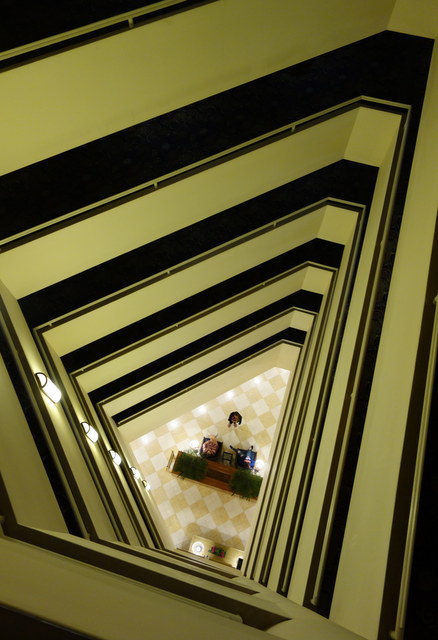This hotel’s oddly-shaped floors made for an interesting downward view.
Appreciation Art Photography
Math Photo: Lego-Linear Approximations
This replica of The Thinker at Legoland got me thinking about linear approximations.
One of the fundamental ideas in Calculus is that certain kinds of curves can be very closely approximated by straight lines. In fact, when examined closely enough, these differentiable curves are essentially indistinguishable from straight lines. This is important because lines are easy to understand and analyze, whereas curves can be very complicated.
We see this phenomenon at play in Lego sculpture. Here, The Thinker’s curves are being approximated by rectangular Legos, and beautifully so. And scale plays an important role: a larger Thinker looks better in Lego than a smaller one, because the finer the approximation, the better the fit. This is something that any child who has ever tried to make a Thinker out of handful of Legos knows this firsthand.
Related Posts
Appreciation Geometry Photography
Math Photo: 32-Fold Symmetry
Here’s another lovely mathematical encounter from the New York Botanical Garden, and a nice companion piece to Spiky Symmetry. I believe this is known as a balloon cactus (Paradoia Magnifica). With 32 ribs, I can’t help but wonder how high the rotational symmetry group can go!
Related Posts
Geometry Photography
Math Photo: Spiky Symmetry
These cacti caught my. I can see both a dodecagon and a star in the 12-fold symmetry of the cactus in front. And to my surprise, the cactus behind it has thirteen sections!
I wonder about the range, and deviation, of the number of sections of these cacti. And what are the biological principles that govern these mathematical characteristics?




